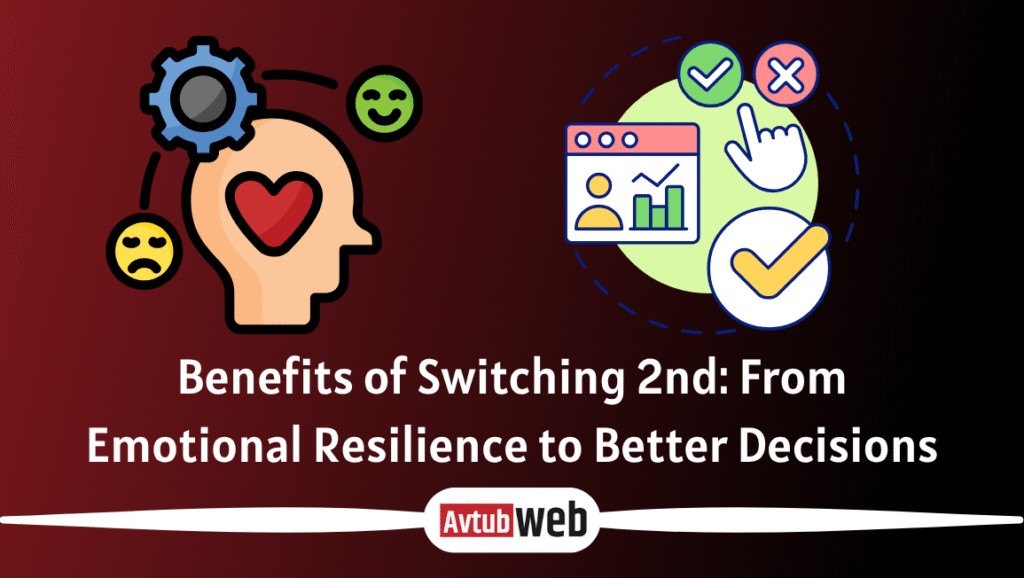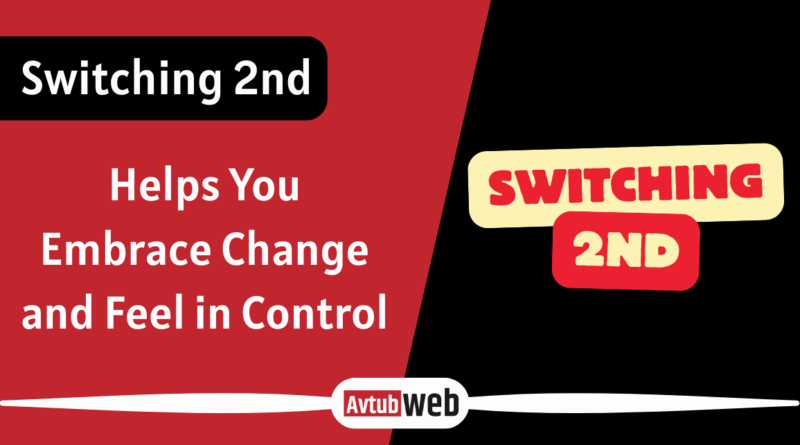How Does Switching 2nd Help You Embrace Change and Feel in Control?
Switching 2nd helps you handle change better and feel more in control of your daily life. By consciously moving from one task to another at the right moments, you can keep your mind fresh and avoid getting overwhelmed. This approach helps you manage your time wisely, stay focused, and reduce stress. Instead of feeling stuck or burned out, switching 2nd allows you to balance different activities, which leads to more energy, better decisions, and a clearer sense of control. It’s a simple way to bring calm and order to a busy, fast-paced world.
What Is Switching 2nd?
Switching 2nd means purposely changing from one task or activity to another in a way that helps you stay focused and manage your time better. It’s not just random multitasking but a planned way to move between things so you don’t get too tired or overwhelmed. By doing this, you can keep your mind fresh and even come up with new ideas more easily. It’s a method that combines psychology and being mindful about when and how you switch tasks.
Why Is Everyone Talking About It in 2025?
In 2025, more people are talking about switching 2nd because life feels busier and more complicated than ever. With so many digital distractions and the need to juggle work, family, and personal goals, this strategy helps people stay on track. It’s easier now to use tools and reminders to switch tasks at the right time. Switching 2nd is becoming popular because it helps people feel less stressed, get more done, and be more creative in their daily routines.
Why Switching 2nd Matters More Than Ever in a Rapidly Changing World?
The world keeps changing quickly, and this can make it hard to keep up. Switching 2nd helps you adjust better by training your brain to change focus smoothly. When you switch tasks with a plan, it stops you from getting burned out and helps you stay clear-headed. This way, even when things change suddenly, you can stay in control and handle your responsibilities without feeling overwhelmed. You can explore more about what Switching 2nd really means and why it matters in this detailed Savvy Dispatches article.
How Switching 2nd Helps You Embrace Change and Regain Control of Your Life?
Using switching 2nd in your daily life means you break big tasks into smaller pieces and switch between them thoughtfully. This helps you avoid getting tired or bored and keeps your energy up. It also encourages habits like drinking herbal tea in the morning or reading instead of watching screens at night, which improve your focus and sleep. With this method, you feel more balanced and less stressed because you manage your time and tasks in a way that works with your natural rhythm.

The Surprising Origins and Evolution of the Switching 2nd Concept
Switching 2nd started as an idea in behavioral psychology to help people be more productive. At first, it was about managing time better by grouping similar tasks. But as technology made multitasking more common, experts saw that it often causes mistakes and stress. So, switching 2nd grew to include mindfulness, which means being aware and intentional about when you switch tasks. Today, it’s a helpful tool used in many areas of life to build better habits and routines.
Real-World Examples of How People Are Using Switching 2nd Successfully
Many people have improved their lives by using switching 2nd:
- Jane stopped drinking coffee in the morning and switched to herbal tea, which helped her feel clearer and more energetic.
- Mark cut down on screen time at night and started reading instead, which boosted his creativity and helped him sleep better.
- Sarah mixes gym workouts with outdoor activities to keep things interesting and stay motivated.
- Tom began meal prepping instead of eating fast food, which gave him more energy and focus during work.
The Psychological and Social Impact of Embracing Switching 2nd
Switching 2nd changes how your brain handles tasks by making it easier to adjust and stay calm. It helps with mental challenges like resisting old habits or feeling overwhelmed. Socially, it encourages you to work with others, share goals, and stay accountable, which makes building new habits easier. Overall, it reduces stress and improves how you relate to your work and the people around you by keeping your mind engaged and flexible.
Common Myths and Misconceptions About Switching 2nd You Should Ignore
There are some wrong ideas about switching 2nd that can confuse people:
- It’s not just another fad or a form of random multitasking.
- You don’t have to switch tasks all the time; switching thoughtfully is better.
- It won’t make your day chaotic; in fact, it helps prevent tiredness and stress.
- It’s not a quick fix that works the same for everyone — it needs to be adapted to your life.
How to Start Applying the Switching 2nd Mindset in Your Daily Routine?
To start using switching 2nd, look for times in your day when changing tasks feels natural, like after finishing a work block or before relaxing. Set reminders, such as phone alerts or notes, to help you remember to switch. Think clearly about what you want to do next so your focus stays sharp. Make small changes at first, and share your goals with someone who can support you. Keep checking how the changes feel and adjust as needed to build good habits.

Benefits of Switching 2nd: From Emotional Resilience to Better Decisions
Switching 2nd helps you handle emotions better by lowering stress and keeping your mind active. It gives you fresh ideas and helps you get more done by using strategies like time-blocking and task batching. This method also teaches discipline and makes it easier to make good decisions. Research shows that using focused task switching can increase productivity by around 25% (source).
Potential Drawbacks and Real Challenges You Might Face With Switching 2nd
Some difficulties with switching 2nd include:
- Your mind might find it hard to adjust at first and feel tired.
- Old habits can make it tough to keep up new routines.
- Busy schedules may leave little time to practice switching.
- Switching too much without a plan can cause overwhelm.
- Without reminders or support, it’s easy to forget to switch.
Expert Tips to Master the Practice of Switching 2nd Like a Pro
Experts suggest starting with one small change each week to avoid feeling overwhelmed. Use planners or apps to keep track of your switches. Put up visual reminders and set environmental cues to help you switch tasks smoothly. Find a friend or family member to share your goals with for extra motivation. Finally, regularly look back at what’s working and what isn’t so you can keep improving your routine.
Final Thoughts
Switching 2nd offers a simple way to manage your tasks and keep your focus sharp even when life feels busy. It helps you stay creative, calm, and in control. Though it takes some getting used to, using reminders and support makes it easier to build habits that last. By practicing switching 2nd, you can better handle whatever changes come your way and keep your days running smoothly.
Read Our Other Articles
Read More



